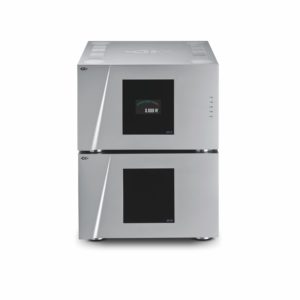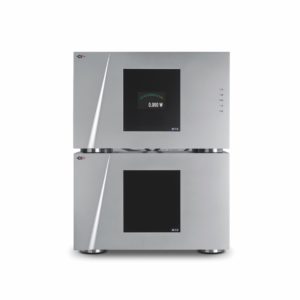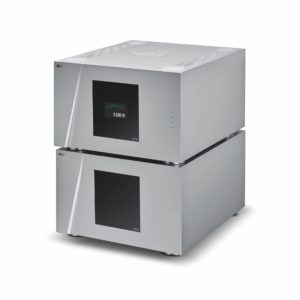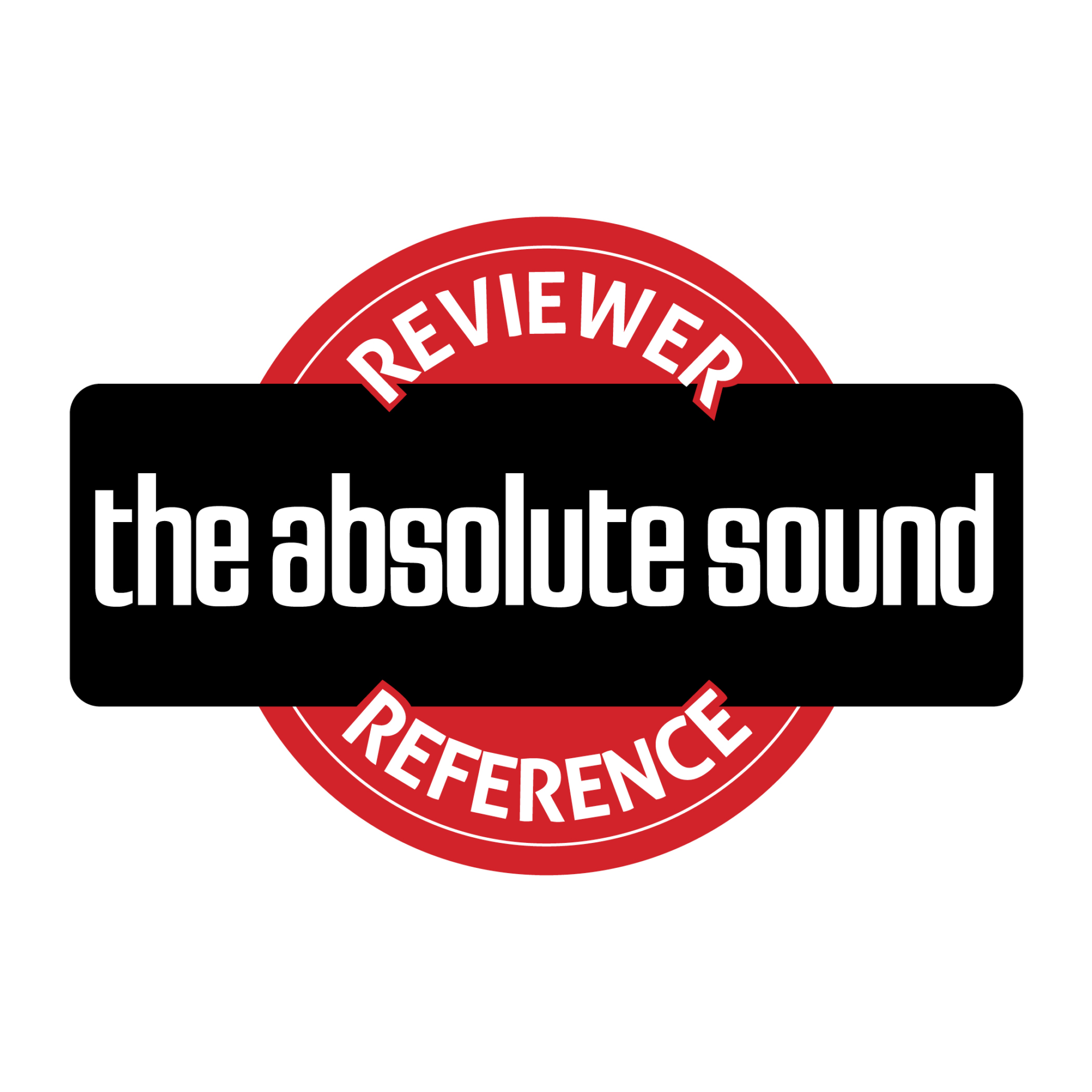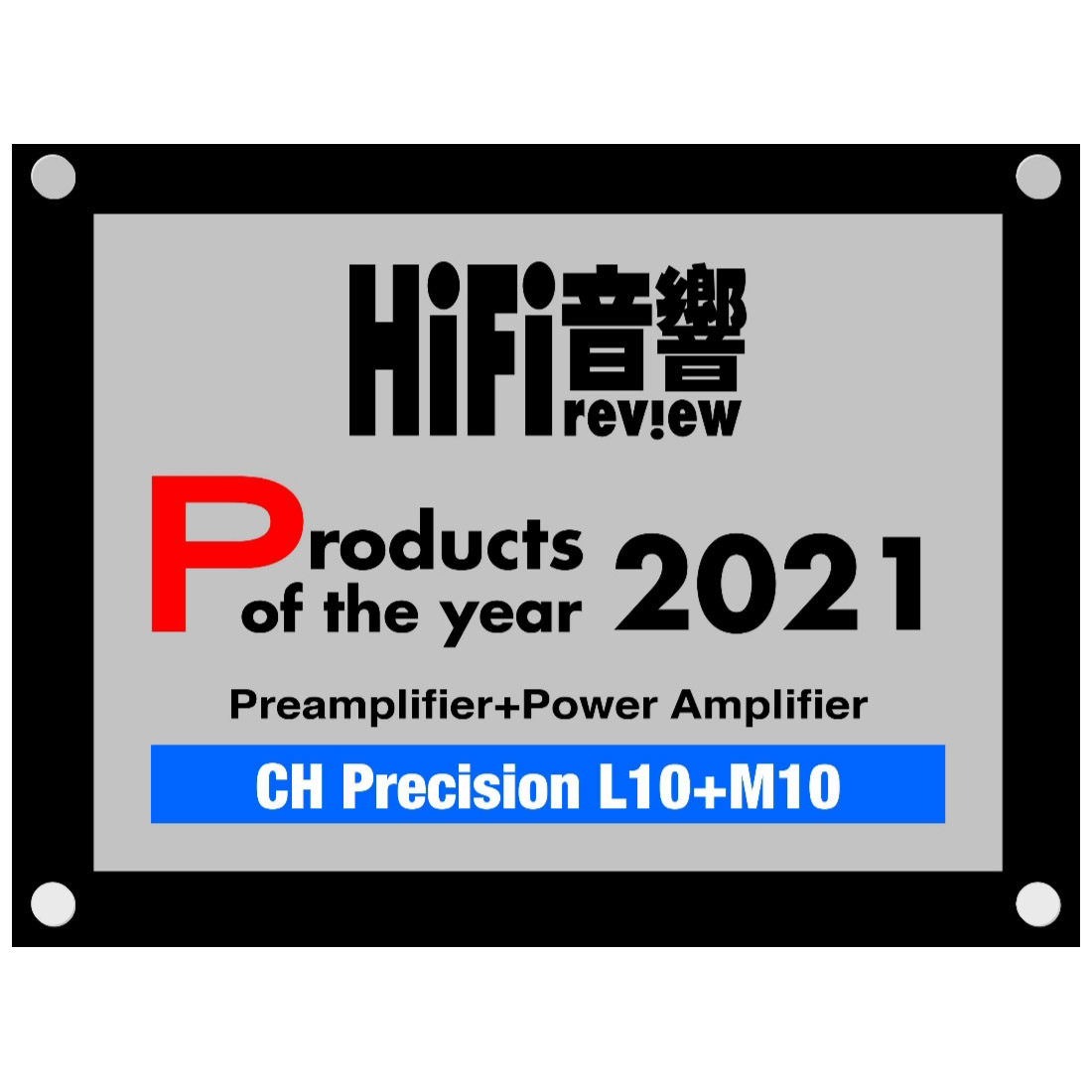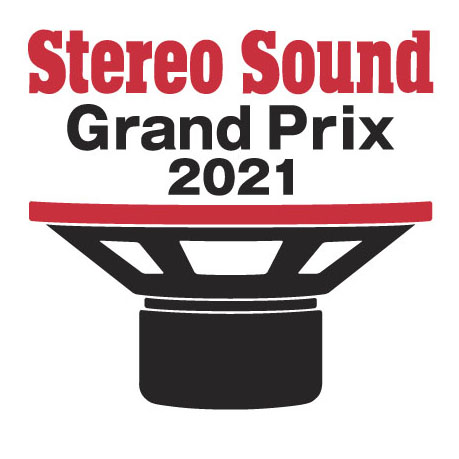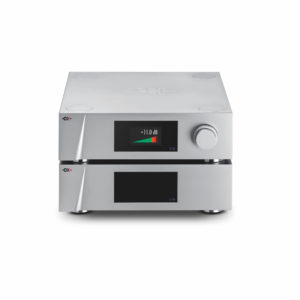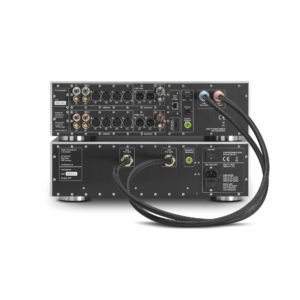Product Description
In a few short years, our M1.1 has become a classic, setting the standard in terms of both performance and versatility. So superseding it, establishing a completely new level of musical capability was always going to demand a major effort and a complete re-think, re-examining every part down to component level. The result was a unique new input stage that significantly outperforms existing circuits, all new circuit boards, re-laid to minimise induced noise and distortion and upgraded components throughout the signal path – all contributing to a dramatic increase in low-level resolution, transparency, natural tonality and musical flow. But at the other end of the scale, headroom is a major limitation on amplifier performance. Dynamic swings can test even the M1.1’s generous 200 W/Ch rated output, so for the M10 we didn’t just increase that by 50%, we doubled the power supply capacity too, creating an output stage with massive musical potential. That reservoir of power doesn’t just come into play on musical climaxes. It gives the quietest passages and instruments the same stable clarity and presence you hear in real life, it precisely traces changes in level and musical density, it holds instruments separate but places them precisely within a single space. It recreates the energy and chemistry of the original performance – and when that performance reaches its climax, the M10 reproduces that too. Effortlessly!
It’s when you try to put all that musical potential in a box that the physical challenges begin. Power supplies are big – and they’re heavy. Building a single chassis to accommodate the M10 was certainly possible, but the resulting product would have been somewhere between difficult and impossible to move or house. That’s why the M10 amplifier comes in a twin-chassis configuration. Those two outwardly similar boxes are not mono-blocs. Instead they are an amplifier stage and a separate power supply chassis. Even splitting the M10 like this, each box is a two-man lift, although they retain the M1.1’s manageable dimensions and will fit into standard racks.
What the M10 also shares with the M1.1 is that amplifier’s versatile topology and user configurable operating parameters. That makes the M10 four amps in one, with output configurable for stereo, bi-amp operation, high-current or high-power mono – in which mode it delivers over 1KW into an 8 Ohm load. The modular input options have been simplified and users can now adjust global feedback ratio (damping factor) in 1% steps, allowing even finer speaker and system matching.
Twice the size of the M1.1 the M10 delivers more power, is just as versatile and even more configurable. With unique circuitry, improved components and more refined signal routing, it improves on the performance of the established model in every single respect. Our goal was to raise the bar. Listening to the M10, even we are surprised just how high it’s been set.
Nominal Input Voltage
Measurement conditions:
-
- Amplifier unloaded
- 22Hz to 22kHz measurement window
- THD+N < 0.01%, any feedback ratio
Balanced: 3.6VRMS
Single-ended: 1.8VRMS
Input Impedance
Balanced: 94kΩ or 600Ω
Single-ended: 47kΩ or 300Ω
Amplifier Gain
Stereo, Bi-Amp, Monaural: 24dB
Bridged: 30dB
Bandwidth
Measurement conditions:
-
- 8Ω load
- 1WRMS into load (output voltage: 2.83VRMS)
Bandwidth: DC to 500kHz (-3dB), input low-pass filter OFF
Bandwidth: DC to 120kHz (-3dB), input low-pass filter ON
Maximum Output Power
Measurement conditions:
-
- THD+N: < 0.1 %
- Signal frequency: 1kHz
| Amplifier Mode |
8Ω |
4Ω |
2Ω |
1Ω |
| Stereo / Bi-Amp |
2x 300WRMS |
2x 550WRMS |
2x 900WRMS |
– |
| Monaural |
300WRMS |
600WRMS |
1000WRMS |
1600WRMS |
| Bridged |
1100WRMS |
1700WRMS |
2500WRMS |
– |
Total Harmonic Distortion + Noise
Measurement conditions:
-
- Signal frequency: 1kHz
- 8Ω load
- 50WRMS into load
- 22Hz to 80kHz measurement window
100% Local feedback: < 0.01 %
100% Global feedback: < 0.002 %
Intermodulation Distortion
SMPTE IMD: < 0.001%
Amplifier Output Noise
Measurement conditions:
-
- Input terminated with 27Ω
- 22Hz to 22kHz measurement window
Stereo, Bi-Amp, Monaural: < -95dBu (14 µVRMS)
Bridged: < -92dBu (20 µVRMS)
Signal to Noise ratio
Stereo, Bi-Amp, Monaural: > 132 dB
Bridged: > 135 dB
Gain Trim
0dB to -6dB in 0.5dB steps
Amplifier Global vs Local Feedback Ratio
From 0% Global feedback (100% Local) to 100% Global feedback (0% Local) in 1% steps
Weight
M10 Power supply unit: 78kg
M10 Amplifier unit: 53kg
CH-Control App
Meet the CH-Control App – a control application that allows users direct access to every aspect of their CH system’s set up and use via any Android portable device. The software control systems used to set and monitor the operational parameters of each and every CH component offer the perfect opportunity for remote operation via a portable App.
To use the CH-Control App, all you will need is an Android device and to connect your CH components to an Ethernet network. That can be done either through the Ethernet control board fitted as standard to all CH units, or through the network streaming board that can be installed in C1.2, C1.2 Mono or I1 units. We would always recommend using a dedicated tablet and network for your music streaming and system control requirements.
Once your CH system is all hooked up, the App gives you touch screen access to every setting on every CH component, from your listening seat, a huge benefit when it comes to whole system set up or optimization for individual recordings. Either way, the CH-Control App allows you to make easier and more accurate judgements: Total control, quite literally at your fingertips.
The features of every CH product are accessible through the CH-Control App:
- Built-in UPnP controller to stream dematerialized music, create playlists, etc.
- Set volume level, select sources, reverse phase, mute, etc.
- Access to all the advanced set-up parameters in every CH product.
- Works on a standard Ethernet network.
- The CH-Control App is freely available on Google Play or directly on our website.



